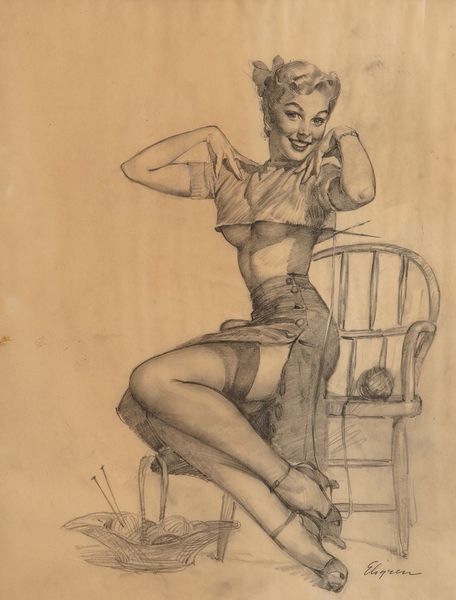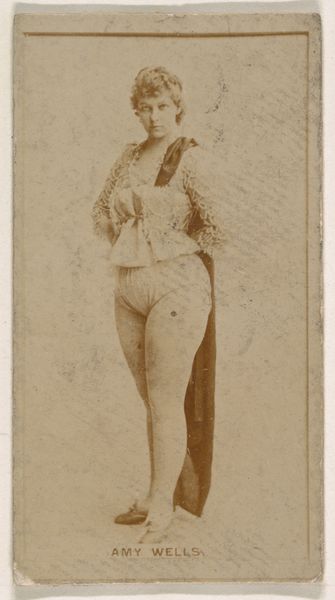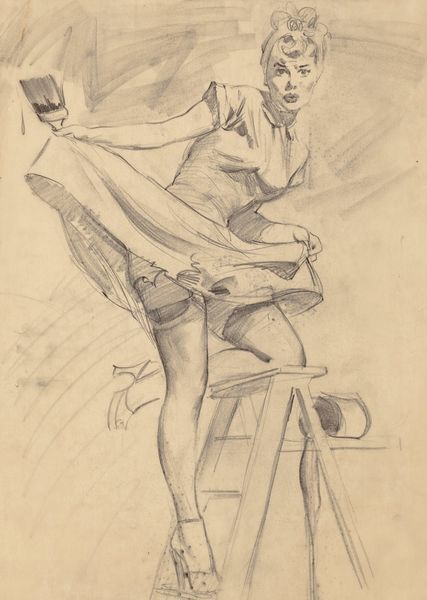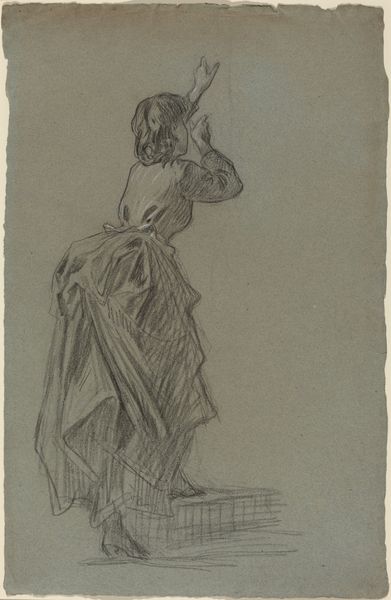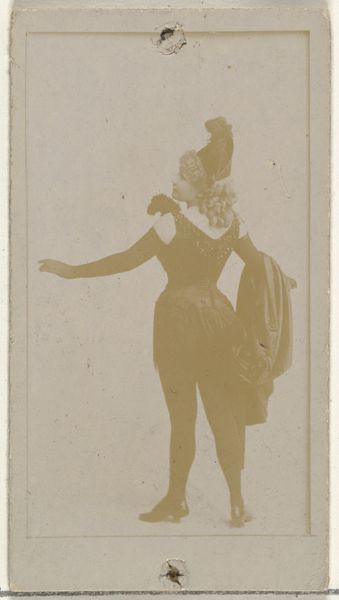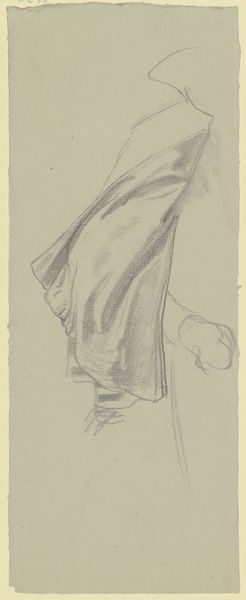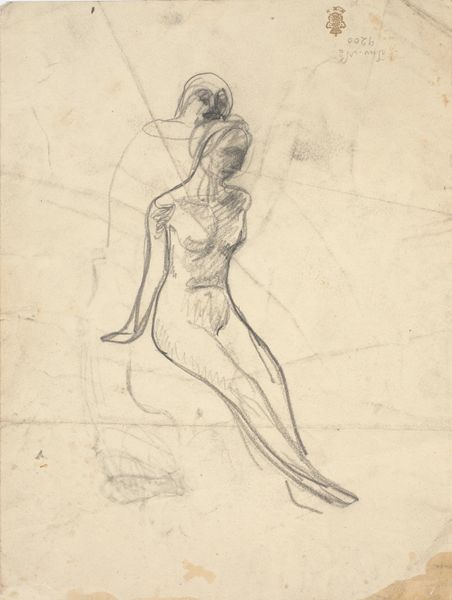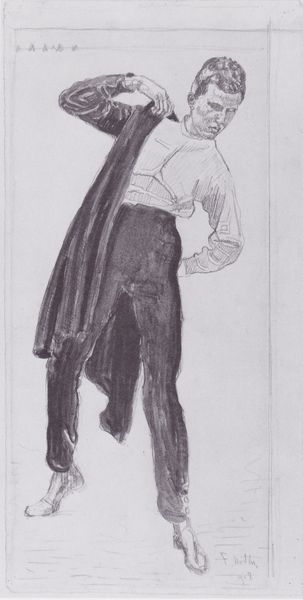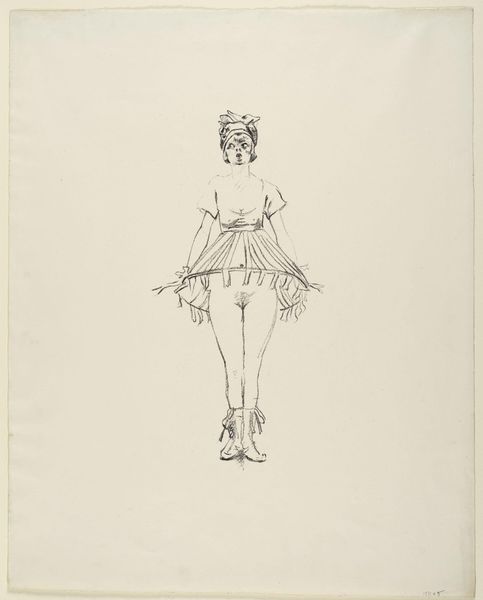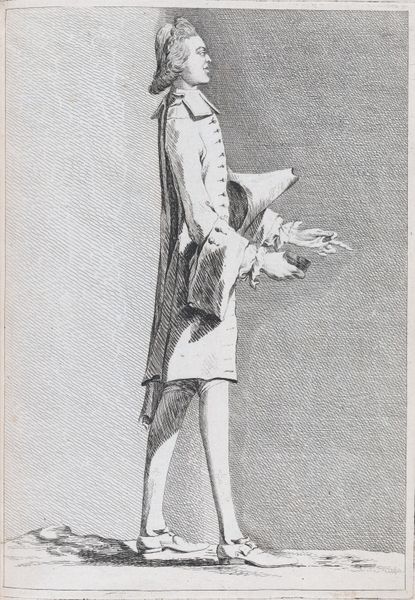
drawing, pencil
#
portrait
#
drawing
#
figuration
#
pencil drawing
#
pencil
#
portrait drawing
#
academic-art
#
realism
Copyright: Modern Artists: Artvee
Curator: I see a preparatory drawing titled "Patriotic Woman," likely by Gil Elvgren, executed in pencil. Its unfinished quality gives it an interesting appeal. Editor: It's… suggestive. Even in grayscale pencil, there's a sense of performance here. Is she serving up freedom? Curator: Elvgren's pin-up work often played with symbols of American identity and an idealized feminine form. Notice how the textures of the jacket and shorts seem realistically rendered yet slightly beyond tangible in its final state. Editor: Realistically rendered? Everything is centered on… a very particular presentation of female anatomy. How do the materials serve that ideal? Pencil drawings for mass reproductions had to hold up and convey the same allure as the fully painted images. What did these sketches signify about the finished product for the viewer? Curator: The pencil rendering gives it an immediacy that reinforces an authentic portrayal. She's both the ideal and your girl next door. Also, she has symbols all over her jacket and hat, like Uncle Sam imagery. What is the significance here? Editor: It suggests that ideal, that accessibility, is fabricated. Her hat and jacket are symbols but not the thing itself, which suggests something fleeting and performative about "Patriotism". Consider, too, that a drawing is a cheaper medium, made for wider circulation—was this ideal meant for mass consumption? Curator: You highlight an interesting contrast; perhaps Elvgren utilizes national symbols and classic "bombshell" iconography together to portray cultural desires and national pride as a type of longing during the rise of mid-century America. Her pose and attire is her offering up of this cultural desire to a global audience. Editor: It's fascinating to consider how the economics of the materials, combined with iconic symbolism and representation of gender and longing, reflect deeper themes during mid-century America. Elvgren was not only selling desire, he was constructing the way Americans materially perceived it. Curator: A compelling notion to connect materials, cultural performance and patriotism. Editor: Indeed, and understanding that relationship gives me a better insight into our collective image of freedom.
Comments
No comments
Be the first to comment and join the conversation on the ultimate creative platform.
